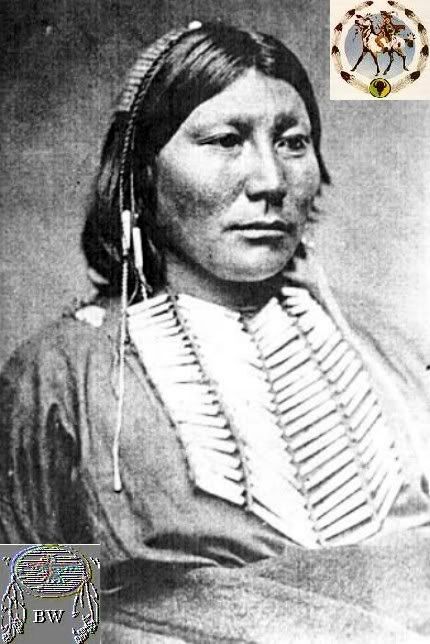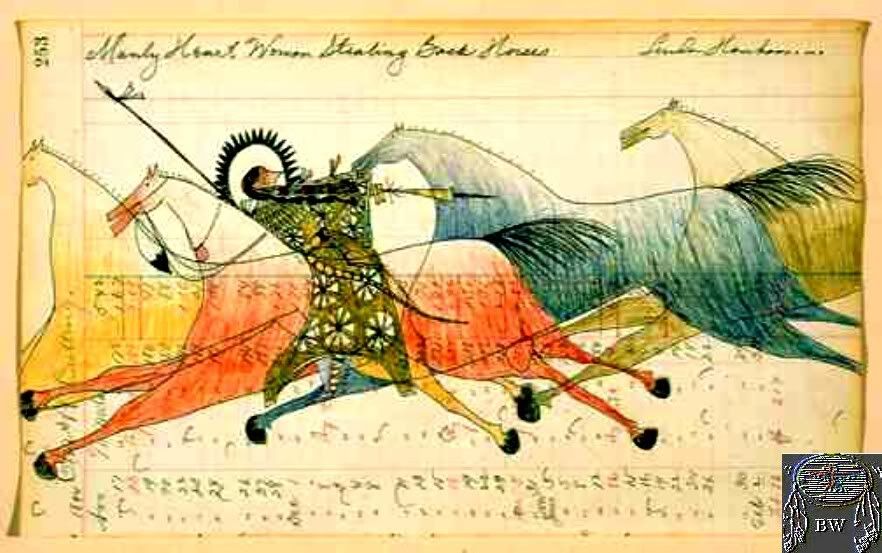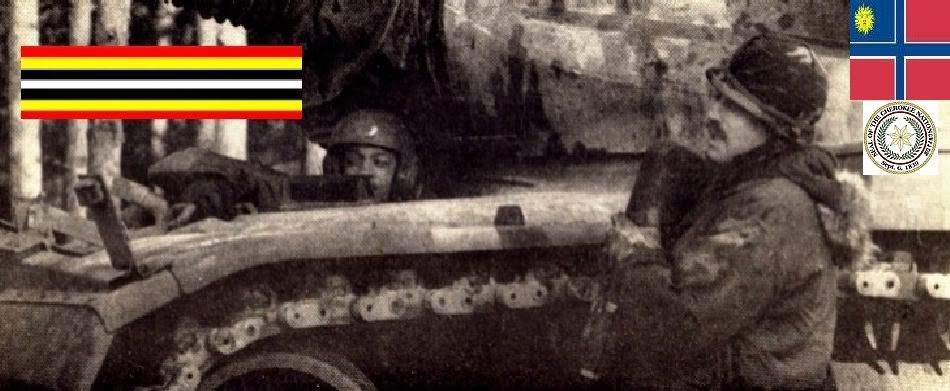|

Chief White Horse
(1820-1892)
Warriors Citation
White Horse (Tsen-tainte), a Kiowa chief during the second half of the nineteenth century, was noted among the tribe for his
daring. Even in his teens he showed remarkable adeptness as an apprentice warrior. Due to his unusual strength, he became
an outstanding horseman, able to snatch up a child while at a gallop. In the summer of 1867 White Horse joined a large party
of Comanches and Kiowas on a revenge raid against the Navajos, who were then living in exile on the reservation near Fort
Sumner, New Mexico. On the Canadian River near the Texas-New Mexico line, White Horse and some of his followers killed and
scalped a Navajo warrior. Shortly afterward, the war party attacked a Navajo village on the Pecos River. Although White Horse
participated in the council at Medicine Lodge Creek in Kansas, he soon cast his lot with the war faction and gained considerable
notoriety during the early 1870s for his raids on Texas settlements. He and his followers made a raid on Fort Sill on June
12, 1870, following the annual tribal Sun Dance, and stole seventy-three mules from the post quartermaster. On June 22 they
attacked a party of cattle drovers on the trail a few miles south of the fort. White Horse killed and scalped two men before
a detachment of troops came to the Texans' relief. Whites considered him the "most dangerous man" among the Kiowas. Shortly
thereafter, White Horse led his band into Texas, killed Gottlieb Koozer, and took his wife and six children captive. Subsequently,
on August 7 the Quaker Indian agent, Lawrie Tatum, reprimanded the guilty party and withheld the weekly rations until all
captives and stolen stock were returned; the Koozers were ransomed for $100 each, and raids in the vicinity of Fort Sill were
curtailed, but White Horse defiantly continued his attacks south of the Red River.

On September 30 he ambushed a stagecoach en route to Fort Concho near Mount Margaret (also known as the Mound) and killed
Martin Wurmser, a trooper who was serving as an escort. White Horse also participated in the Warren Wagon Train Raid on May
18, 1871, and helped carry the fatally wounded brave, Hau-tau, to safety during the fight; afterward he escaped arrest. While
the imprisonment of chiefs Satanta and Big Tree momentarily curbed his raiding, he and Big Bow engineered another attack on
a wagon train in what is now Crockett County on April 20, 1872, which resulted in the death of seventeen Mexican teamsters.
On the way back from that foray, White Horse was wounded in the arm during a skirmish with Capt. N. Cooney's Ninth Cavalry
troops. On May 19 White Horse's younger brother, Kim-pai-te, was killed in a fight with L. H. Luckett's surveying crew near
Round Timbers, twenty-five miles south of Fort Belknap. That event prompted White Horse to organize a revenge raid, and on
June 9, with the help of Big Bow, he attacked the homestead of Abel Lee on the Clear Fork of the Brazos, about sixteen miles
from Fort Griffin. Lee and his fourteen-year-old daughter Frances were fatally shot, his wife scalped and murdered, and the
remaining three children carried into captivity. Soldiers trailed them, but the Kiowas escaped back to the reservation and
held a scalp dance that went on for several nights. The Lee children remained captives for a few months before they were ransomed.
After the 1872 councils and the release of Satanta and Big Tree from prison on parole, White Horse was peaceful for a time
but remained with the war faction. He accompanied the intertribal war party to the second battle of Adobe Walls in June 1874
and was encamped in Palo Duro Canyon when Col. Ranald S. Mackenzie's troops attacked on September 27. As a result, White Horse
and his followers surrendered at Fort Sill on April 19, 1875. Because of the atrocities he had committed, he was among those
singled out by Kicking Bird for incarceration at St. Augustine, Florida. In 1878 he was returned with the others to the reservation
near Fort Sill, where he spent his remaining years peacefully with his family. White Horse died of a stomach ailment in 1892
and was buried on the reservation. From: historical accounts & records


LINK TO BRAVEHORSE WARRIORS VOLUME TWO
|

